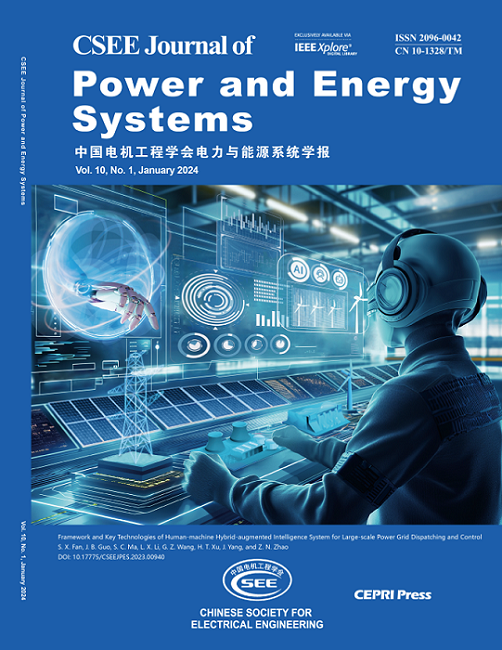Novel Control Method for the MMC Connected to Wind Farms
IF 5.9
2区 工程技术
Q2 ENERGY & FUELS
引用次数: 0
Abstract
Large-scale renewable energy transmission via the voltage source converter (VSC) based high-voltage direct current (HVDC) is a crucial development direction for constructing a new-typed power system in China. However, renewable energy is characterized by volatility, intermittency, and randomness. When the sending-end modular multilevel converter (MMC) cannot adapt to the rapid fluctuations in renewable energy output, its energy balance will be disrupted by the active power difference between the AC and DC sides, causing issues such as wideband oscillations and exacerbated circulating currents. To solve the problem mentioned above, a novel energy balance-based control method for MMCs connected to wind farms is proposed in this paper, enabling the MM C to effectively adapt to fluctuations in renewable energy output and naturally maintain circulating current at a relatively low level. Firstly, the evolution principle illustrating topology decomposition and reconfiguration of the MMC is revealed. Secondly, the control method for AC internal voltage is proposed, which combines the energy balance between the half MMCs and voltage amplitude support. Thirdly, the DC internal voltage is defined, and its control method is proposed based on the MMC's overall energy balance. Then, independent control of each bridge arm is achieved by integrating the energy balance of the bridge arms with both the AC and DC internal voltages. Finally, an electromagnetic transient simulation model is built with PSCADIEMTDC, and the efficacy and practicality of the proposed method are demonstrated through extensive simulation experiments.MMC与风电场连接的新型控制方法
基于电压源变换器(VSC)的高压直流(HVDC)大规模可再生能源传输是中国建设新型电力系统的重要发展方向。然而,可再生能源具有波动性、间歇性和随机性等特点。当发送端模块化多电平变换器(MMC)不能适应可再生能源输出的快速波动时,其能量平衡将被交流和直流侧有功功率差所破坏,造成宽带振荡和循环电流加剧等问题。针对上述问题,本文提出了一种基于能量平衡的新型风电场mmc控制方法,使mmc能够有效地适应可再生能源输出的波动,并自然地将环流保持在较低的水平。首先,揭示了MMC拓扑分解和重构的演化原理。其次,提出了结合半mmc间能量平衡和电压幅值支持的交流内电压控制方法。第三,定义了直流内部电压,并提出了基于MMC整体能量平衡的直流内部电压控制方法。然后,通过将桥臂的能量平衡与交流和直流内部电压相结合,实现对每个桥臂的独立控制。最后,利用PSCADIEMTDC建立了电磁瞬变仿真模型,并通过大量仿真实验验证了该方法的有效性和实用性。
本文章由计算机程序翻译,如有差异,请以英文原文为准。
求助全文
约1分钟内获得全文
求助全文
来源期刊

CSEE Journal of Power and Energy Systems
Energy-Energy (all)
CiteScore
11.80
自引率
12.70%
发文量
389
审稿时长
26 weeks
期刊介绍:
The CSEE Journal of Power and Energy Systems (JPES) is an international bimonthly journal published by the Chinese Society for Electrical Engineering (CSEE) in collaboration with CEPRI (China Electric Power Research Institute) and IEEE (The Institute of Electrical and Electronics Engineers) Inc. Indexed by SCI, Scopus, INSPEC, CSAD (Chinese Science Abstracts Database), DOAJ, and ProQuest, it serves as a platform for reporting cutting-edge theories, methods, technologies, and applications shaping the development of power systems in energy transition. The journal offers authors an international platform to enhance the reach and impact of their contributions.
 求助内容:
求助内容: 应助结果提醒方式:
应助结果提醒方式:


